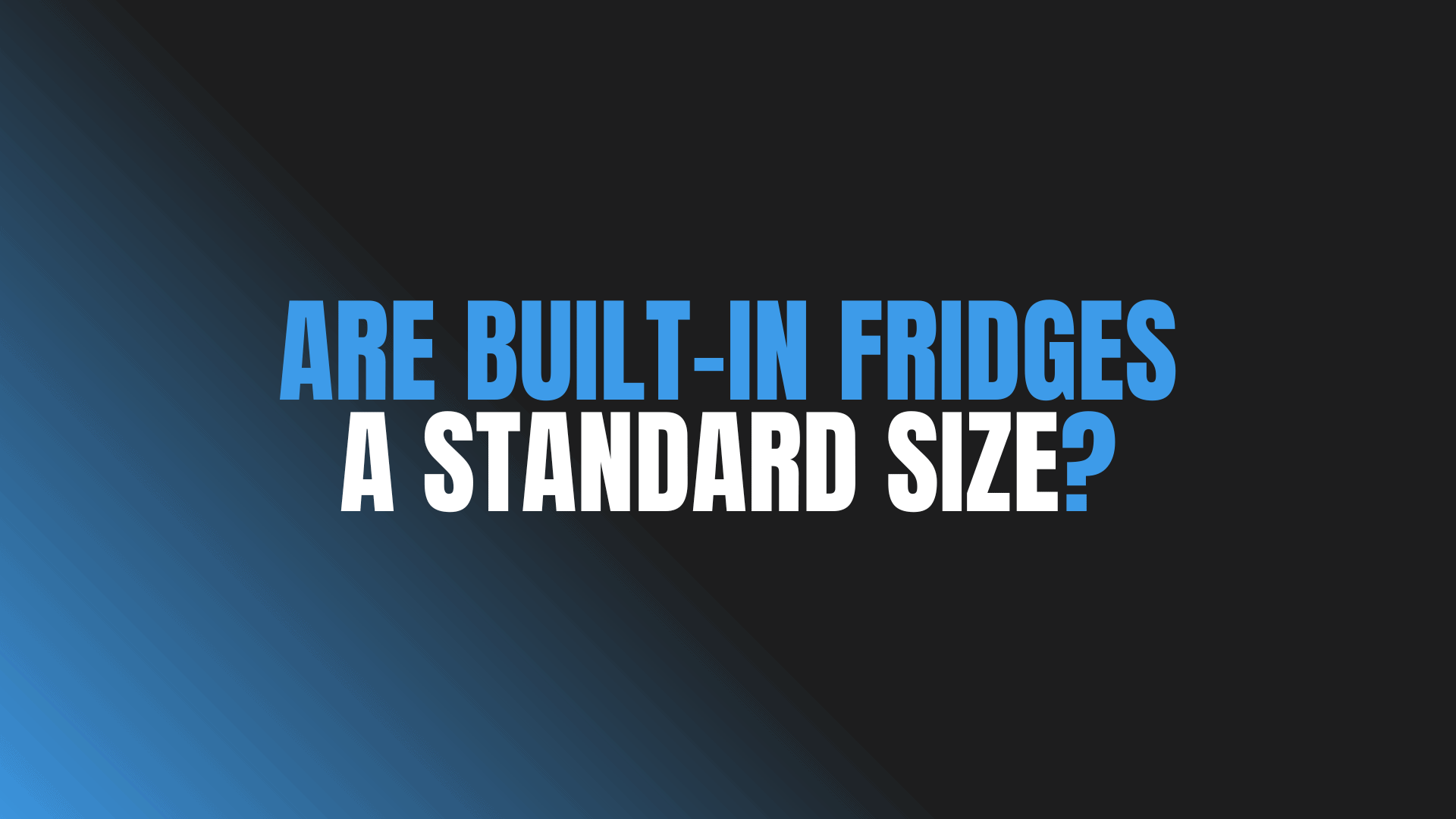
Question: Are Built-In Fridges a Standard Size?
Answer: No, built-in fridges are not a standard size exactly. While they often adhere to standard cabinet widths and depths, heights can vary significantly. Check manufacturer specifications for precise dimensions.
Built-In Refrigerator Dimensions: Understanding the Basics
Are built-in refrigerators a standard size? This question arises when homeowners renovate kitchens or replace appliances. Understanding built-in refrigerator dimensions is crucial for seamless integration into cabinetry. While the term “standard” suggests uniformity, the reality is more nuanced. This article explores the typical dimensions of built-in refrigerators, addresses common misconceptions, and provides practical advice for homeowners. We will examine the factors influencing size variations, discuss the importance of accurate measurements, and offer helpful tips for selecting the right refrigerator for your kitchen. This information empowers you to make informed decisions and avoid costly mistakes during your kitchen project.
Manufacturers design built-in refrigerators to fit flush with surrounding cabinetry, creating a streamlined look. This integrated design requires careful consideration of dimensions. Depth, width, and height all play critical roles. While some standardization exists, variations occur between brands and models. Understanding these variations is key to a successful installation. This article offers clear explanations and practical guidance, eliminating confusion and facilitating confident decision-making.
Common Built-In Refrigerator Sizes
Built-in refrigerators commonly range from 30 to 48 inches in width. Standard depths, excluding doors, typically measure 24 inches. This depth aligns with standard kitchen counter depth. Heights vary, generally falling between 68 and 72 inches. These dimensions represent common sizes, not absolute standards. Variations exist, particularly in high-end or specialized models.
Counter-depth models maximize kitchen space. Their flush fit with counters creates a streamlined appearance. Full-depth models offer greater storage capacity. They extend beyond the counter, providing more interior space.
Click the link to get more information about Blue Kitchen Refacing
Related Article: What Is the Difference Between Built-In and Built Under Refrigerators?
Related Article: How Much Space Do You Need Around a Built in Refrigerator?
Importance of Precise Measurements
Accurate measurements are essential when choosing a built-in refrigerator. Incorrect measurements can lead to costly errors and the fridge might not fit the designated space and cabinetry modifications might become necessary. Always measure the space before purchasing the appliance. Measure width, height, and depth and verify these measurements with the manufacturer’s specifications.
Consult a professional if you have any doubts, a qualified installer can provide expert advice, they can ensure accurate measurements. They can also handle any necessary adjustments. Careful planning and precise measurements prevent installation problems and ensure a perfect fit.
Tips for Choosing the Right Refrigerator
Consider your household’s needs when choosing a built-in refrigerator. A larger family requires more storage capacity. Smaller households may prioritize space-saving designs. Evaluate your kitchen layout to ensure sufficient clearance for doors and drawers. Consider the location of water lines and electrical outlets.
Research different brands and models to compare features and prices. Read online reviews and seek recommendations from friends and family. Choosing the right refrigerator requires careful consideration of various factors. This research ensures a purchase that meets your specific needs.
Factor in energy efficiency ratings. Energy-efficient models reduce electricity consumption and lower utility bills. Look for models with Energy Star certification as these certifications indicate compliance with energy efficiency standards.
Built-In vs. Freestanding Refrigerators
Built-in refrigerators integrate seamlessly into cabinetry for a streamlined appearance. They often feature front panels that match the surrounding cabinetry. Freestanding refrigerators stand alone and do not require custom cabinetry and they typically cost less than built-in models.
Built-in models offer a premium aesthetic and blend seamlessly with the kitchen design. Freestanding refrigerators provide greater flexibility. Homeowners can move them easily if they rearrange their kitchen. Both types offer advantages and disadvantages and the best choice depends on individual preferences and kitchen design.
Conclusion
Built-in refrigerators offer a sleek, integrated look in modern kitchens. While a true “standard size” does not exist, understanding the common dimensions and influencing factors simplifies the selection process. Accurate measurements are crucial. They prevent costly installation errors. Considering individual needs, kitchen layout, and budget helps homeowners make informed choices.
By carefully evaluating various aspects, from dimensions to features and energy efficiency, you can choose a built-in refrigerator that seamlessly integrates into your kitchen and meets your specific requirements. This thoughtful approach ensures a successful kitchen renovation or appliance upgrade. This comprehensive guide provides homeowners with valuable knowledge for confident decision-making in selecting the ideal built-in refrigerator.

Blue Malue Get in touch with Blue here.
